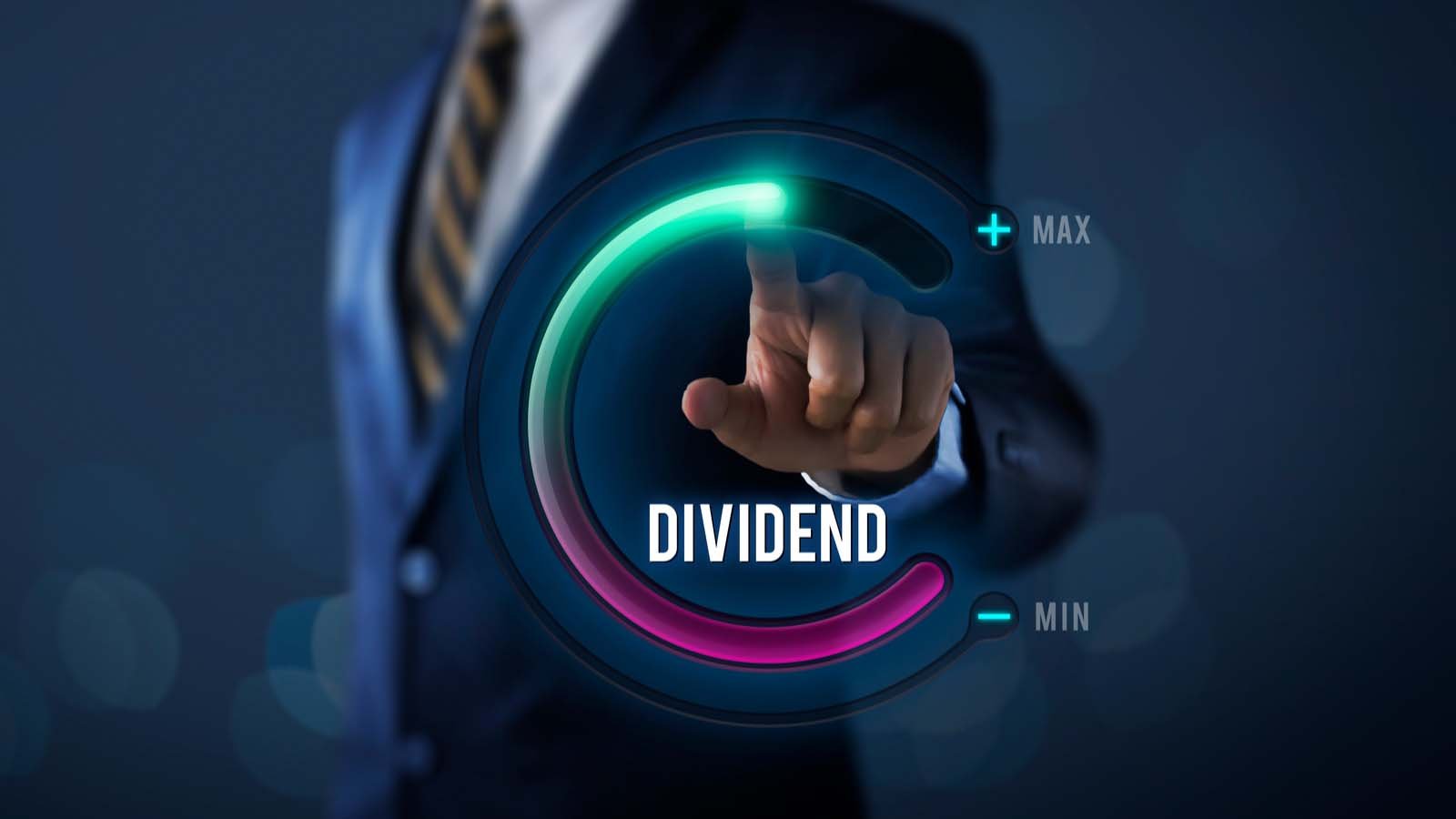A year ago, I wrote an article about seven dividend stocks to buy that had announced a dividend increase in the first 64 days of 2019.
To make the exercise even more useful, I tried to diversify my picks by selecting one stock from seven different sectors. Here’s how they’ve performed since then.
1-Year Total Return – 7 Dividend Stocks to Buy
| Company | Total Return | Current Dividend Yield |
| EPR Properties (NYSE:EPR) | 1.5% | 6.52% |
| Fastenal (NASDAQ:FAST) | 24.5% | 2.6% |
| BlackRock (NYSE:BLK) | 33.8% | 2.6% |
| Penske Automotive Group (NYSE:PAG) | 20.2% | 3.2% |
| Brookfield Infrastructure Partners (NYSE:BIP) | 42% | 3.9% |
| Church & Dwight (NYSE:CHD) | 19.1% | 1.3% |
| Best Buy (NYSE:BBY) | 53.1% | 2.2% |
| Average | 27.7% | 3.18% |
While the performance of the seven dividend stocks managed to beat the Morningstar US Market Total Return Index by 480 basis points over the past year, I think I can do better. That said, I wouldn’t have a problem if you went with the seven stocks listed above. They’re all outstanding long-term holds.
However, if the name of the game is outperforming the benchmark by more than 480 basis points over the next year, here are 10 stocks that I believe have what it takes to deliver superior performance.
Changing things up a little, I’m going with stocks that have at least a 2% dividend yield, are up at least 10% year to date, and have market caps greater than $2 billion. Like last time, I tried to include picks from as many different sectors as possible.
Sociedad Quimica (SQM)

Dividend Yield: 3.86%
First up, we’ve got Sociedad Quimica y Minera de Chile (NYSE:SQM), a basic materials stock that’s based in South America. SQM has a market cap of $3.8 billion, is yielding 3.86%, and has a year to date total return of 13.4% through Feb. 18.
What does it do? SQM is a producer of chemicals, including lithium, potassium fertilizer, iodine, specialty plant nutrition, and industrial chemicals. Lithium accounts for 43% of its gross profit, followed by specialty plant nutrition at 24%, iodine at 22%, potassium at 8%, and industrial chemicals at 3%.
Lithium is used in the production of electric vehicle batteries. Quimica is the world’s second-largest producer with 17% global market share. In November, SQM reported significantly worse year-over-year earnings due to lower lithium prices combined with global oversupply issues.
As Quimica works to capture greater market share in China, investors should continue to expect significant volatility in its stock price. Long-term, I believe it’s a winner.
Colgate-Palmolive (CL)
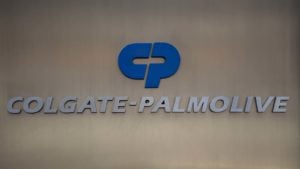
Dividend Yield: 2.27%
Unless you’ve been living in a cave, you’ve probably heard of Colgate-Palmolive (NYSE:CL), the consumer goods company behind Colgate toothpaste, Palmolive dish soap, and Hill’s pet food. Colgate-Palmolive has a market cap of $64.9 billion, it’s yielding 2.27%, and has a year to date total return of 11.1% through Feb. 18.
If you’ve owned CL stock in the past five years, you’ve likely been disappointed as it generated an annualized total return of 3.6%, 576 basis points worse than its peers in household and personal products. It has done even worse relative to the Morningstar US Market Total Return Index, which generated an 11.8% annualized total return over the same period.
The move up so far in 2020 is an indication that CL stock is ready to revert to the mean.
On Jan. 23, Colgate announced that it had acquired Hello Products LLC, one of the fastest-growing premium oral care brands in the U.S. Just days later, Hello introduced a CBD product line that includes a variety of kinds of toothpaste and lip balms.
If Colgate is going to get out of its funk, innovative brands like Hello Products are a step in the right direction. At 4.2 times sales, I wouldn’t categorize CL as cheap, but I would say it’s not expensive either.
Long-term, this looks like the beginning of a long leg up to $100.
Blackstone Group (BX)
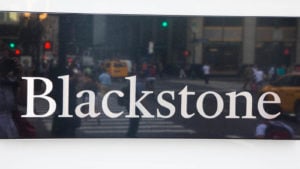
Dividend Yield: 3.17%
Unless you work on Wall Street, there’s a good chance you might confuse Blackstone Group (NYSE:BX), an alternative asset manager with more than $571 billion in assets under management, with BlackRock, the investment manager I mentioned earlier in this article.
Blackstone has a market cap of $72.8 billion, it’s yielding 3.1%, and has a year to date total return of 11.9% through Feb. 18. Over the past five years, it’s got an annualized total return of 14.5%, 268 basis points better than the markets as a whole.
I’ve been a fan of Brookfield Asset Management (NYSE:BAM), another alternative asset manager ($540 billion in AUM), for several years. I don’t know as much about Blackstone as I do BAM, but CEO and co-founder Stephen Schwarzman is as smart as they come.
It’s appropriate that Brookfield CEO Bruce Flatt is equally bright. It makes for a wonderful competition. You can’t go wrong owning either of these stocks.
Novo Nordisk (NVO)

Dividend Yield: 1.9%
Selecting Danish health care company Novo Nordisk (NYSE:NVO) was made easier by the fact NVO stock was the only health care company on my screen that was up more than 10% year to date.
Novo Nordisk has a market cap of $119.8 billion, it’s yielding 1.9%, and has a year to date total return of 10.7% through Feb. 18. Over the past three years, it’s got an annualized total return of 24.1%, almost 12 percentage points greater than its biotechnology peers.
The company reported its fiscal 2019 results on Feb. 5. They were extremely positive, with operating profits up 11% on the year with revenues increasing by 6% year over year to 122 billion Danish kroner, which is equivalent to $13.4 billion in U.S. dollars.
Novo Nordisk’s revenues remained stagnant in the three years between 2016 and 2018. However, in 2019, its business took off, with sales growing 9% overall. A significant contributor to that growth was its international operations outside the U.S. Specifically, its AAMEO region (Africa, Asia, Middle East and Oceania), saw sales increase by 16% in 2019, an important number considering it accounts for 23% of sales outside the U.S.
In 2019, three drugs in its Diabetes and Obesity care segment: NovoRapid, Victoza, and Ozempic, accounted for 50% of the segment’s overall revenue and 42% of the company’s total sales.
Somehow, given the diet of most Americans, I don’t see the demand for these drugs going away anytime soon.
Lockheed Martin (LMT)

Dividend Yield: 2.25%
Lockheed Martin (NYSE:LMT) is one of only three companies that made the cut from the industrial goods sector. I went with LMT for a couple of reasons, which I will get to in a moment.
LMT is the largest defense contractor in the world. It’s probably best known for the F-35 fighter jet. It has a market cap of $120 billion, it’s yielding 2.25%, and has a year to date total return of 11.9% through Feb. 18.
The first reason I like Lockheed Martin is that a woman runs it. Marilyn Hewson, its CEO, was named CEO of the Year in 2018 by Chief Executive magazine. Go through a list of past winners and you’ll see that the long-time employee is in good company.
When LMT stock dipped in July 2018, I just had to recommend its stock. It’s up almost 50% since then. Defense contractors don’t have it as easy as some might think. Hewson makes the job look easy.
The second reason I like LMT stock is that it’s a likely suitor for Bombardier (OTCMKTS:BDRBF) now that the Quebec aerospace company has sold off everything but its business jet program that includes the Learjet, Challenger, and Global brands.
Bombardier is better off within a larger company; Lockheed could use a civil aviation business. Like the merger many years ago between Lockheed and Martin Marietta, this one would be a winner.
Darden Restaurants (DRI)
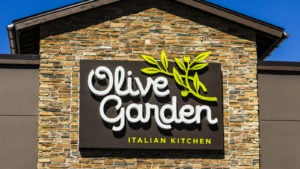
Dividend Yield: 2.9%
For most investors, Darden Restaurants (NYSE:DRI) is probably best known as the owner of Olive Garden. When I think of DRI, I think of Yardhouse, the company’s food and craft beer concept, that has 79 locations across the U.S. However, there’s no question that Olive Garden is the biggest brand in the Darden stable with 867 locations as of Q2 2020.
Darden has a market cap of $14.6 billion, it’s yielding 2.9%, and has a year to date total return of 11.3% through Feb. 18.
It has been a while since I’ve considered DRI stock. The last time I wrote about the company in 2013, it still owned Red Lobster, which has since been sold off. At the time, CEO Clarence Otis was driving the company into the ground. It needed a new direction.
Current CEO Gene Lee has been the chief executive since October 2014, when the former COO was put in charge after activist investor Starboard Value had Otis fired. On an interim basis at first, Lee became the permanent chief executive in February 2015. Since Lee has taken the reins, DRI stock is up 116% over the past five years. He remains a firm hand in a very competitive industry.
NortonLifeLock (NLOK)

Dividend Yield: 2.4%
It has been three months since Symantec was renamed NortonLifeLock (NASDAQ:NLOK), after Broadcom (NASDAQ:AVGO) acquired Symantec’s enterprise business for $10.7 billion.
NortonLifeLock has a market cap of $12.5 billion, it’s yielding 2.4%, and has a year to date total return of 27.5% through Feb. 18.
What’s left after the sale is the Norton and LifeLock consumer cyber safety brands. On its first day of trading, UBS analyst Fatima Boolani gave NLOK stock a “buy” rating and a $27 target price. Boolani believes that NLOK has an excellent chance to be a reliable generator of free cash flow providing investors with a healthy dividend.
It’s important to note that most of the gains in 2020 are due to the $12 a share special dividend paid on Jan. 31 as part of the company’s pledge to return more than 100% of the after-tax proceeds from the sale of its enterprise business.
In fiscal 2020, NortonLifeLock is likely to finish the year with free cash flow approaching $1 billion. Based on its current market cap, it’s got an FCF yield of 8%, which many consider being value territory. Add in the healthy dividend and NLOK could be the best of the bunch value-wise.
Algonquin Power & Utilities (AQN)

Dividend Yield: 3%
It’s not often that you see a utility company make a list of stocks to buy for capital appreciation, but I did say I would include as many sectors as possible. Being from Canada, I take special pride in Algonquin Power & Utilities (NYSE:AQN).
The company has a market cap of $8.7 billion, it’s yielding 3%, and has a year to date total return of 16.5% through Feb. 18. Over the past five years, it’s got an annualized total return of 18%.
Vivian Lewis, the editor of the Global Investing newsletter, recently called AQN her favorite investment idea for 2020. It was her top pick for conservative investors in 2019.
As Lewis points out, Algonquin plans to be generating 75% of its electricity from renewable power no later than 2023. Selling to more than 750,000 customers in the U.S. and Canada, it is an excellent play on climate change.
There’s no question AQN is a winner. That’s why in November 2018, I called it one of the best stocks to buy under $10. Since then, it’s up 58%, an annualized rate of return of 48%.
If all utilities were like that, there wouldn’t be anything else in my portfolio.
BlackRock (BLK)
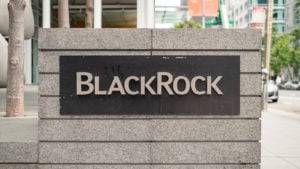
Dividend Yield: 2.6%
Now that I’ve gotten through all the sectors with at least one pick each, I’ve gone back to one of two stocks from last year’s recommendations mentioned earlier.
BlackRock has a market cap of $86.8 billion, it’s yielding 2.6%, and has a year to date total return of 12.4% through Feb. 18.
As I highlighted earlier, BLK stock has a great return over the past year, up 27.8%. It even has a pretty good three-year annualized total return of 15.6%, 99 basis points higher than the markets as a whole. It’s not nearly as good for the five- and 10-year periods.
Back in January 2019, I recommended BLK stock, suggesting that its diverse revenue streams (iShares accounted for just 38% of sales; in 2019, that was down to 30% of its base fees) make it an excellent investment in good times and bad.
CEO Larry Fink remains one of America’s most outspoken chief executives. However, I say that with reverence. Very few CEOs of large companies have the stomach for honest conversations. To shareholders’ benefit, Fink does. As long as Fink is CEO, BLK remains a fantastic dividend stock to own for the long haul.
Brookfield Infrastructure (BIP)

Dividend Yield: 3.86%
Last but not least, I ave gone back to one of Brookfield Asset Management’s spinoffs. It owns 30% of Brookfield Infrastructure and went public in January 2008.
Brookfield Infrastructure has a market cap of $22.7 billion, it’s yielding almost 3.9%, and has a year to date total return of 10.6% through Feb. 18. Over the past five years, it’s got an annualized total return of 16.5%, 604 basis points higher than its peers in the utility sector.
On Dec. 23, the company announced that it had acquired Cincinnati Bell (NYSE:CBB) for $2.6 billion, including the assumption of debt. Brookfield’s management wanted Cincinnati Bell because its footprint of more 1.3 million customers in Ohio, Kentucky, and Hawaii makes an excellent addition to its data infrastructure portfolio.
While some might consider Cincinnati Bell long past its prime, the company is halfway to upgrading its entire network. With Brookfield’s help, it will get the other 50% completed sooner rather than later.
Brookfield remains an excellent judge of value. In 3-5 years, shareholders will be happy it paid a 36% premium to acquire CBB’s stock.
Will Ashworth has written about investments full-time since 2008. Publications where he’s appeared include InvestorPlace, The Motley Fool Canada, Investopedia, Kiplinger, and several others in both the U.S. and Canada. He particularly enjoys creating model portfolios that stand the test of time. He lives in Halifax, Nova Scotia. At the time of this writing Will Ashworth did not hold a position in any of the aforementioned securities.
